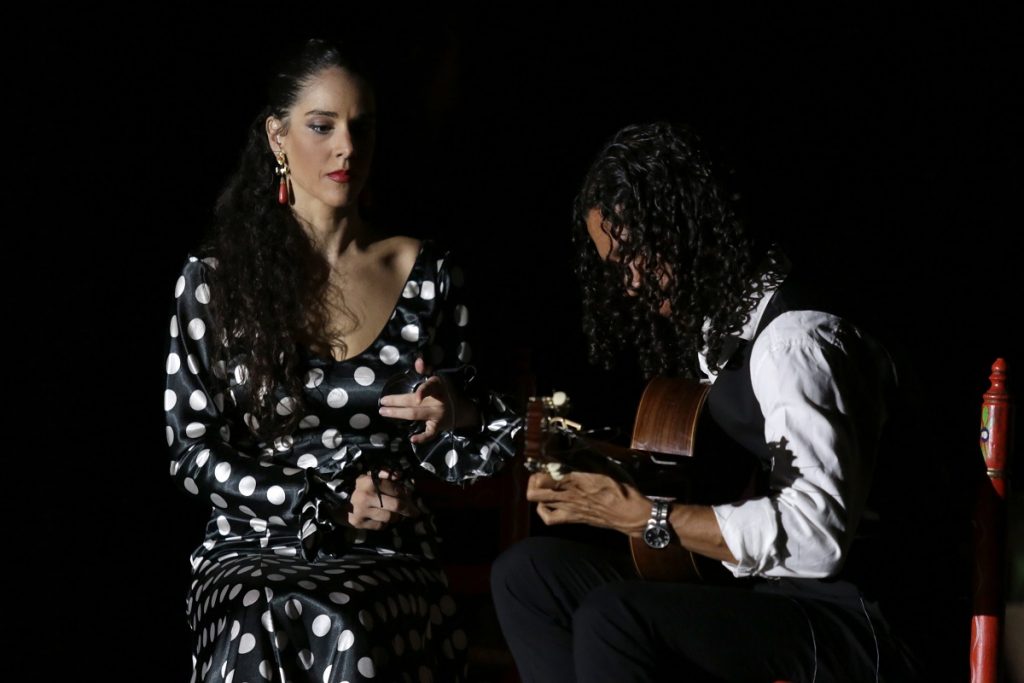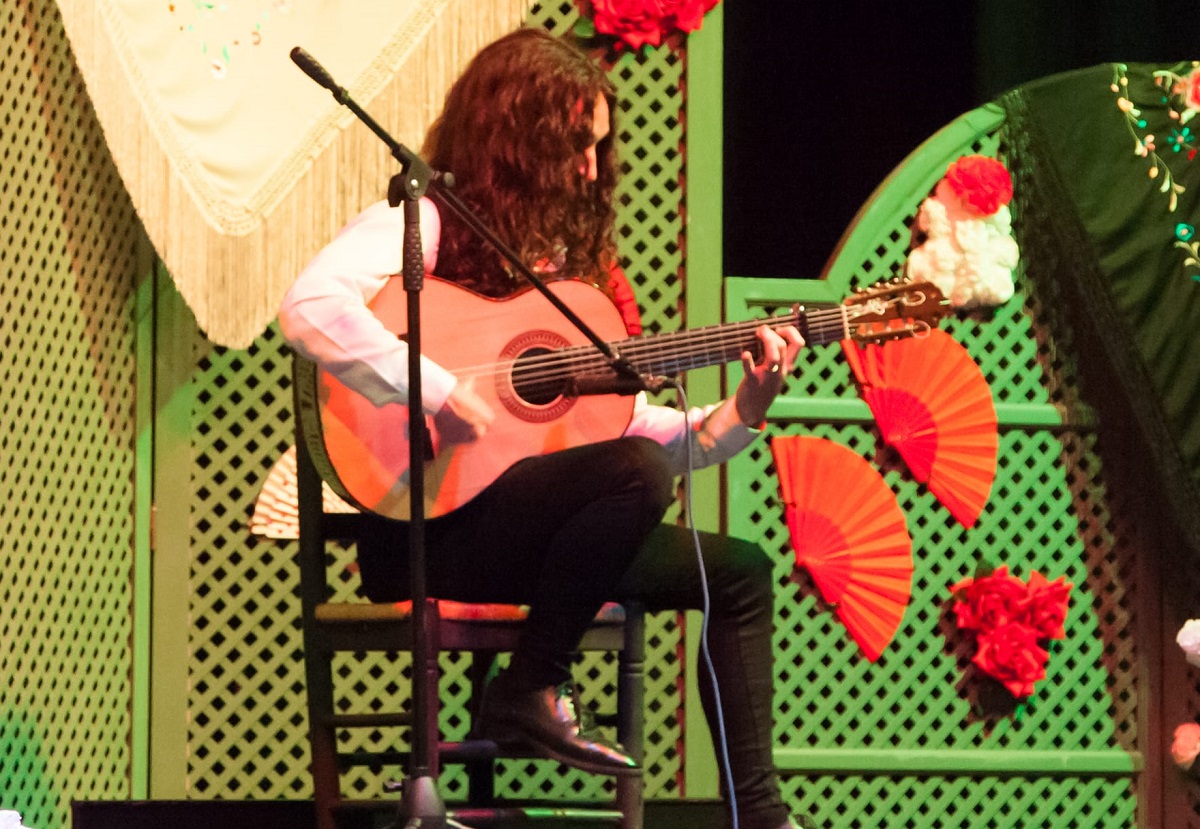
In a show, dance, singing and flamenco guitar they are linked in perfect harmony offering flamenco in its purest and most authentic state. Seeing a performance, anyone would say that these three elements have always been together, that without one of them, this art is not understood, but the reality is that it has not always been so.
In fact, in the origins of flamenco, singing was the only protagonist, which later joined the dance and, finally, the guitar, an instrument that has become an essential for this art. The flamenco guitar touch is different from other musical styles, as well as its technique and posture.
The emergence of flamenco tablaos greatly influenced the integration of this instrument into flamenco music. In the nineteenth century, coinciding with the splendor of these places, the guitar joined the singing that, until then, had dispensed with any musical accompaniment. Since then, these two elements have evolved and enriched this Andalusian art together.
The fusion of the guitar with flamenco singing culminates in the twentieth century, driving the rise of flamenco shows and the popularization of this art. With the incorporation of this instrument, the structure of the flamenco styles is consolidated and the flamenco singing schemes are regulated, granting them inputs and outputs with the melodic accompaniment of the guitar.
Flamenco guitarists are known as ‘tocaores’. Both in the instrument, as in the technique and posture of the flamenco touch, differences can be seen if we compare them with other styles, such as the classical guitar. If you look at the interpreters, the differences are obvious. Think of the posture acquired by each other. The flamenco player crosses his legs and rests the guitar on his highest leg, placing the guitar’s neck almost horizontal to the ground.

The flamenco guitar is also slightly different from the classical one. It is lighter, its narrower and less loud box so as not to overshadow the singer’s voice. In addition, it is usually cypress wood, with the cedar handle, the spruce top and the metal pegbox.
And the flamenco musician’s technique is also different and with its own characteristics of this art. The flamenco touch is characteristic of the use of the thumb, which the players usually rest on the harmonic cover of the guitar, while the index and middle fingers rest on the upper string they are playing. In this way, greater loudness and power in interpretation is achieved.
The middle finger also supports him on the guitar striker, in order to achieve greater precision and strength when pressing the string. The puncher is also an element that is used as percussion, something that gives great strength to the flamenco performance.
The picado, the alzapúa, the tremolo and the rasgueado are the most used techniques by these artists, granting an identity seal to this artistic genre. As they are?
Picado: it is one of the most studied techniques by flamenco guitarists. It consists of alternating the index and middle fingers for the execution of scales at high speed. In its origin it consisted of short sentences to close some bars, but over time many players were creating longer passages. Guitarists such as Paco de Lucía or Gerardo Núñez serve as a reference in the execution of the mincing.
Rasgueado: it is the technique par excellence of the flamenco touch. These are percussions on several strings with one or several fingers of the right hand, while the left one marks the desired chord, creating different rhythmic sounds. In the strumming there is a lot of variety. Some are used to accompany singing and others to dancing, which usually have more volume and strength to support the flamenco dancer.
Sometimes it is executed together with the beating, which consists in percussion on the box with, generally, the middle finger under the strings. It is common in almost all styles, but mainly in bulerías, soleá, alegrías, rumbas, tangos or tientos.
Alzapúa: it consists of pressing down with the thumb the rope to immediately press it again upwards with the nail, doing this way time and setback. Serranito or Vicente Amigo are guitarists with prodigious alzapúa.
Trémolo: the flamenco tremolo is especially attractive to the listener. It is the rapid repetition of the same note and is used for moments of emotional tension and lyricism. The most commonly used keeps a tune with the thumb while operating a string with four strokes in this sequence: thumb, index, ring, middle, index. Some guitarists have developed tremolo shapes with many more notes, a technique that Manolo Sanlúcar masterfully performs in his “Prayer” and “Elegía a Ramón Sijé” rondeñas.
Without a doubt, these techniques are not the only ones used by today’s flamenco guitarists, although they are the most used in the touch.
At the Tablao Flamenco El Palacio Andaluz is celebrated daily a show that is unique in Andalusia because of the number of artists who go on stage every night. A flamenco show which there is no lack of singing, dancing and, of course, the guitar. Enjoy the flamenco touch in our tablao. If you visit Seville, you can’t miss our live players!
© 2023 El Palacio Andaluz. All rights reserved.